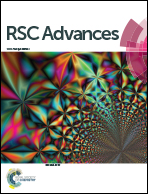In situ hydrogenation of furfural with additives over a RANEY® Ni catalyst
Abstract
The hydrogenation of furfural was studied over a RANEY® Ni catalyst (RN) under a N2 atmosphere in water. Methanol, as a hydrogen donor, was used for hydrogenation via a reforming reaction. Additives, including acetone, acetic acid and phenol, were deliberately added in the in situ hydrogenation process of furfural to investigate the effect and interaction between two kinds of compounds. The results showed that the conversion of furfural decreased to some extent and the product distribution changed a lot because of second additives. Furfuryl alcohol (FA) was detected in the products in the presence of additives and was not detected when furfural was a single reactant. The selectivity of FA reached its highest degree of 19.01% with the addition of acetic acid. The addition of acetone promoted the decarboxylation reaction of furfural, and the selectivity of tetrahydrofurfuryl alcohol increased from 24.53% to 38.07%. The addition of phenol enhanced the rearrangement reaction of furfural and the selectivity of the five-membered ring increased from 47.99% to 88.76%. Compared with the in situ hydrogenation of the single reactant, the conversion of acetone increased and the conversion of acetic acid and phenol decreased in the presence of furfural. The reaction pathway of the hydrogenation of furfural is also discussed in this paper.


 Please wait while we load your content...
Please wait while we load your content...